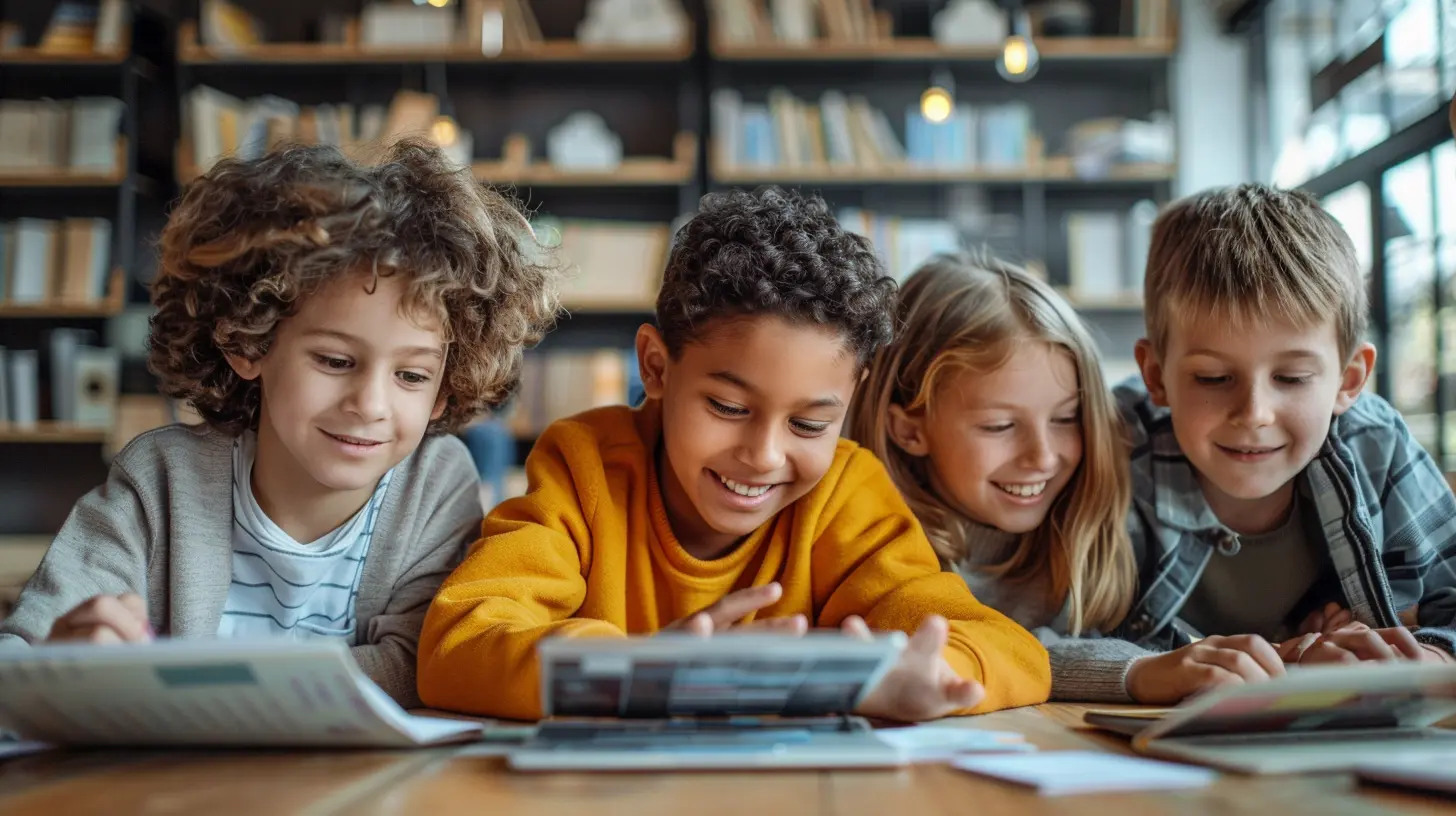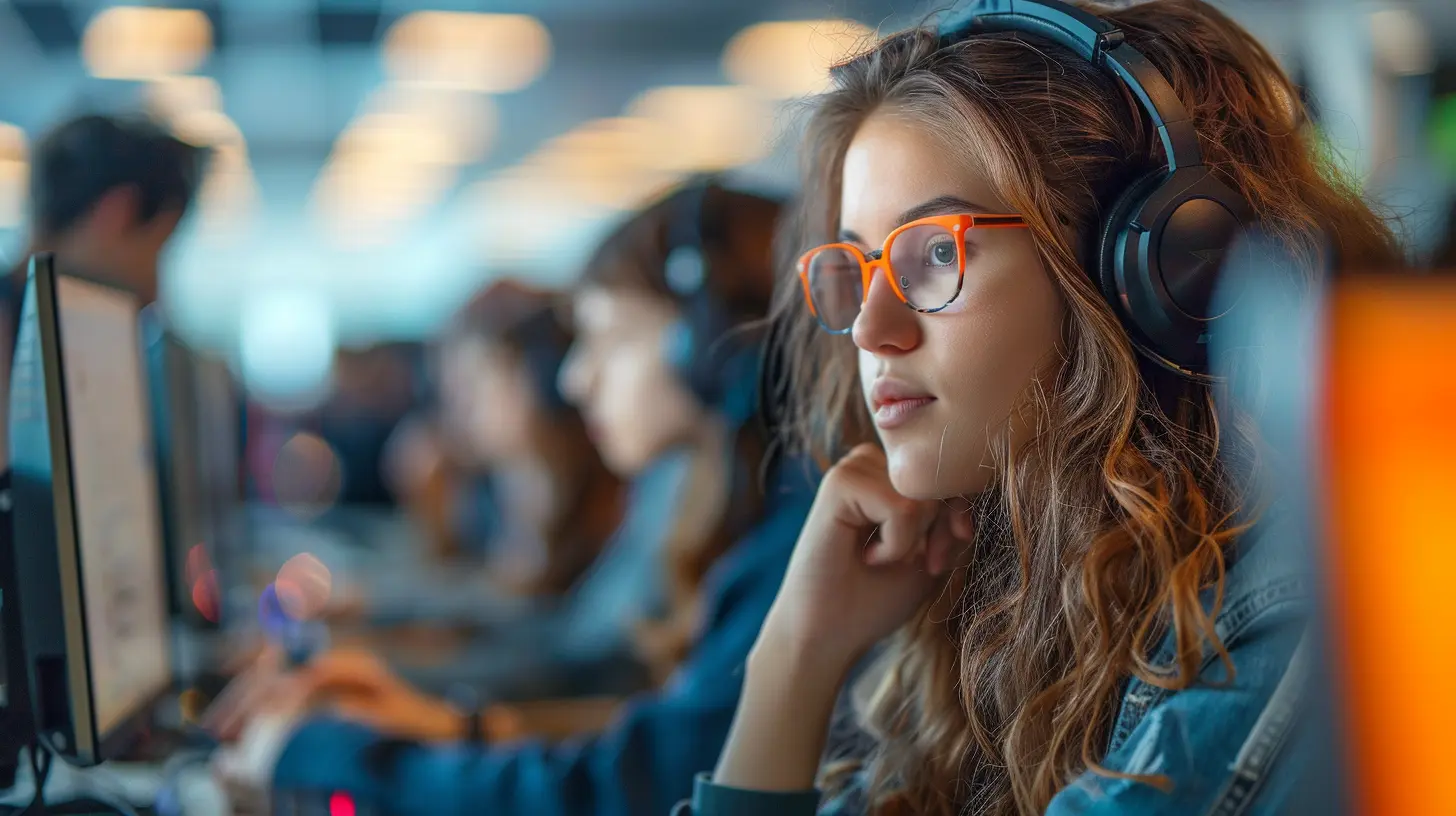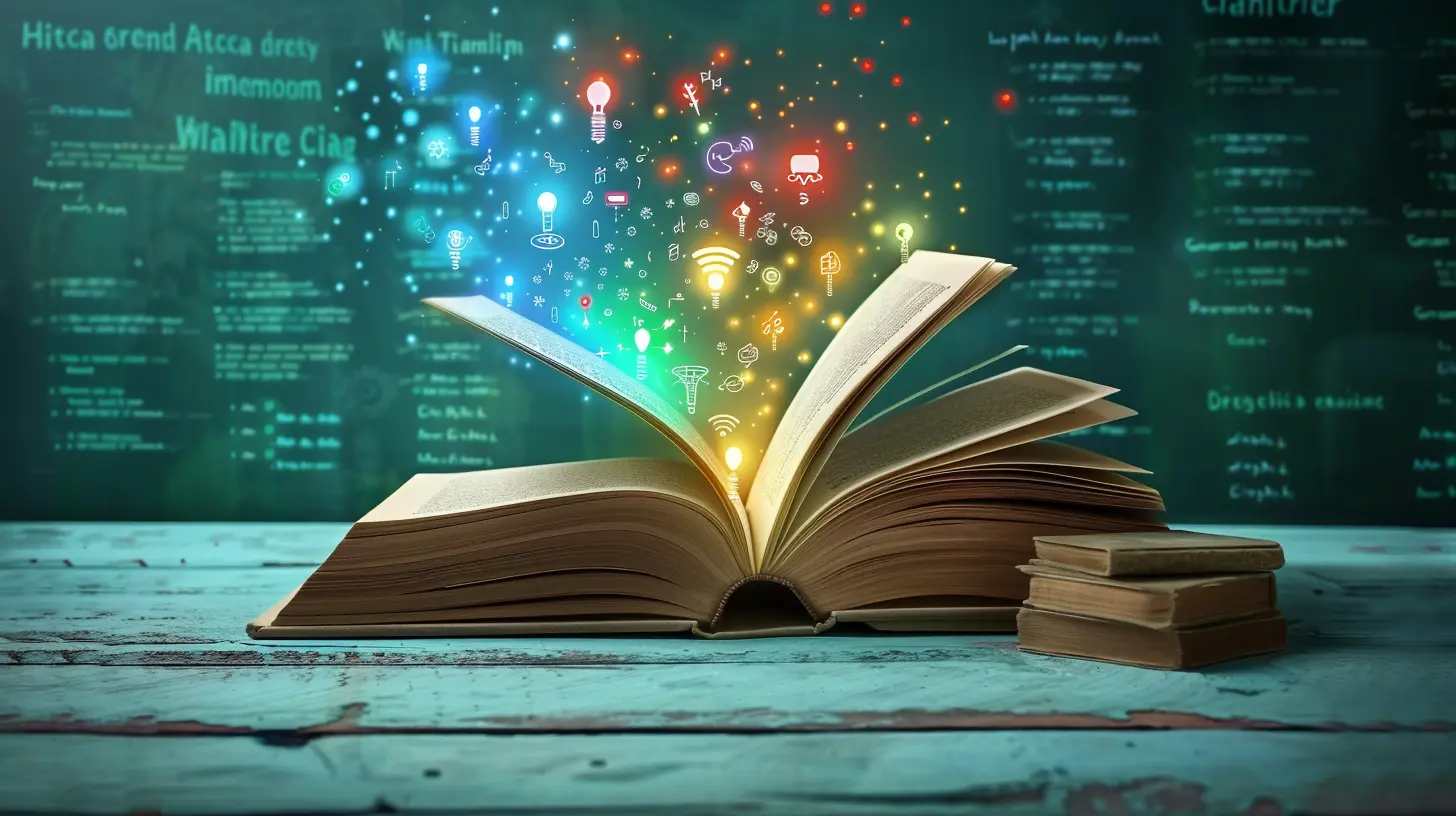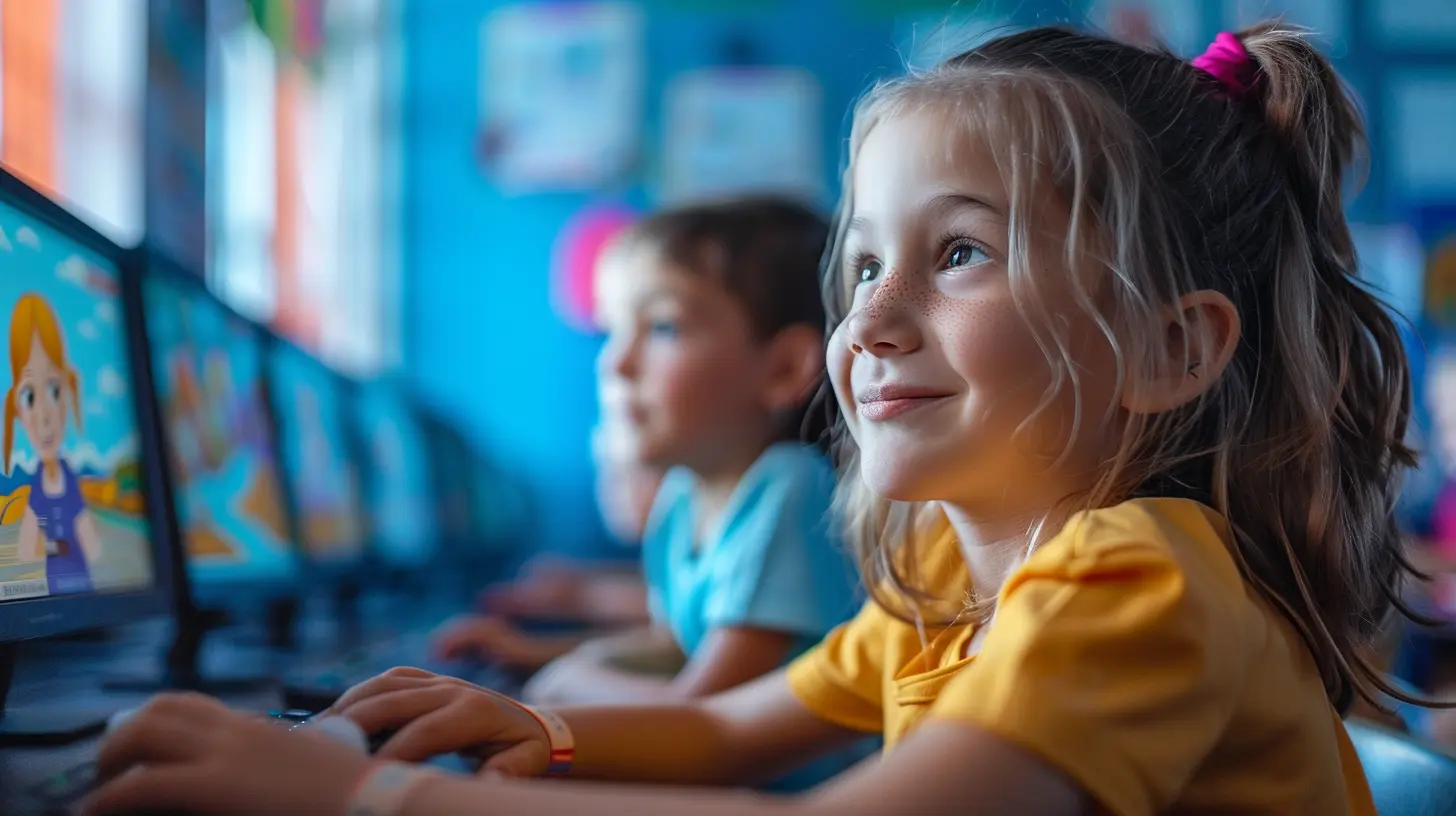How Learning Management Systems are Personalizing Education
26 October 2025
In today’s fast-paced world, education is evolving at breakneck speed. Thanks to technology, the days of chalkboards and rigid learning structures are slowly fading. Enter Learning Management Systems (LMS). These digital platforms are reshaping how students learn, making education more flexible, engaging, and, most importantly, personalized. But how exactly are these systems making learning more tailored to individual needs? Let’s dive in and explore.

What Is a Learning Management System (LMS)?
Before we get into the nitty-gritty of personalization, let’s cover the basics. A Learning Management System (LMS) is a software application that helps educators deliver, track, and manage learning materials. Think of it as the digital Swiss Army knife for teachers and students alike. Whether it’s hosting online courses, tracking student progress, or managing assignments, an LMS handles all the backend work of education so that educators can focus on teaching.But what truly sets LMS platforms apart is their ability to personalize learning experiences. It's not just about uploading course materials and marking attendance anymore. Modern LMS platforms are using data analytics, artificial intelligence (AI), and machine learning to cater to the unique needs of each student.
The Shift Towards Personalized Learning
So, why is everyone suddenly talking about personalized learning? Well, it's simple. We’ve come to realize that everyone learns differently. Some people are visual learners, while others prefer to absorb information through reading or hands-on practice. Traditional classroom settings often struggle to accommodate these diverse learning styles, but LMS platforms are changing that.Remember when you were in school, and the teacher moved on to the next topic even though you hadn’t quite grasped the last lesson? That’s a thing of the past! With an LMS, students can learn at their own pace, revisit materials, and get the support they need when they need it. It’s like having a personal tutor, but without the hefty price tag.

How LMS Platforms Are Personalizing Education
Now that we understand what an LMS is and why personalized learning is important, let's dive into the specific ways these systems are making education more tailored.1. Adaptive Learning Paths
One of the most significant innovations LMS platforms bring to the table is adaptive learning. Using algorithms and AI, LMS systems can create individualized learning paths based on a student’s progress and performance. Think of it as a GPS for learning. Just as Google Maps redirects you when you take a wrong turn, adaptive learning adjusts the educational content based on how well students are doing.For instance, if a student is struggling with a particular math concept, the system may offer additional practice problems or recommend a different resource, like a video explanation. On the flip side, if a student is breezing through a topic, the LMS will push them forward to more advanced content, ensuring they’re always challenged.
This kind of flexibility is a game-changer for both teachers and students. Teachers can focus on providing support where it’s most needed, while students get an educational experience that’s tailored to their own unique pace and capabilities.
2. Data-Driven Insights
Ever heard the saying, “Knowledge is power”? Well, that’s truer than ever in the world of personalized education. LMS platforms collect a mountain of data on student performance. But it’s not just raw numbers—this data is turned into actionable insights.Through detailed analytics, educators can see where students are excelling and where they might be struggling. This allows for timely interventions. If a student is consistently underperforming in quizzes or assignments, the teacher can step in and offer additional help, whether that’s through one-on-one instruction or supplementary materials.
And it’s not just about identifying weaknesses. Data can also highlight areas of strength, allowing teachers to challenge students further or introduce more advanced concepts. Essentially, it’s like having a magnifying glass that helps educators zoom in on each student’s individual needs.
3. Customizable Content Delivery
Another cool feature of LMS platforms is that they allow for customizable content delivery. Gone are the days of “one-size-fits-all” lessons. With an LMS, educators can present the same material in different formats—videos, podcasts, interactive quizzes, or even text-based modules.Let’s say you have a class with a mix of auditory learners, visual learners, and kinesthetic learners. Instead of sticking to a lecture format, an LMS allows you to upload a variety of content types. For example, you could provide a podcast for auditory learners, a video for visual learners, and a hands-on activity for kinesthetic learners. This level of customization ensures that every student can engage with the material in a way that suits them best.
Moreover, some LMS platforms are even starting to incorporate virtual and augmented reality to create immersive learning experiences. Imagine studying biology and being able to virtually dissect a frog without the mess or the smell. Talk about personalized learning!
4. Real-Time Feedback and Assessments
One of the key advantages of using an LMS is the ability to provide real-time feedback. Instead of waiting days or even weeks to get results from a test or assignment, students can receive immediate feedback on their performance. This rapid feedback loop helps students identify mistakes and correct them quickly, reinforcing learning in real-time.Additionally, LMS platforms often come with advanced assessment tools that go beyond traditional quizzes and tests. For example, some systems offer adaptive assessments that adjust the difficulty level based on the student’s previous answers. This ensures that assessments are neither too easy nor too challenging, providing a more accurate measurement of a student’s understanding.
Real-time feedback also benefits teachers, allowing them to quickly spot trends and make necessary adjustments to their teaching strategies. Need to spend more time on a particular topic? No problem. The LMS will provide the data you need to make informed decisions.
5. Gamification of Learning
Let’s face it—education can sometimes feel like a chore. But what if learning felt more like playing a game? LMS platforms are increasingly integrating gamification elements to make learning more engaging and fun. By incorporating features like leaderboards, badges, and rewards, LMS platforms turn the learning process into a game where students can compete with themselves or others.For example, students might earn points for completing lessons, taking quizzes, or participating in discussions. These points can be used to “level up” or unlock new learning materials. It’s like turning education into a video game, and let’s be honest—who doesn’t love a good game?
Gamification not only makes learning more enjoyable but also encourages students to stay engaged and motivated. After all, who wouldn’t want to earn a badge for mastering a new skill?
6. Social Learning and Collaboration
We often think of online learning as a solitary activity, but that doesn’t have to be the case. LMS platforms are incorporating more social learning features that allow students to collaborate and learn from each other. Discussion forums, group projects, and peer assessments are just a few ways LMS systems foster a sense of community.For instance, a teacher might assign a group project where students have to work together to solve a problem. With the help of an LMS, students can collaborate in real-time, share resources, and provide feedback to their peers.
Social learning also promotes a sense of competition—students can see how their peers are doing and strive to improve their own performance. But more importantly, it fosters a collaborative environment where students learn from each other, not just from the teacher.
7. Accessibility and Inclusion
Finally, one of the most powerful ways LMS platforms personalize education is by making learning more accessible. Online learning platforms can be customized to meet the needs of students with disabilities or those who require additional support.For example, LMS platforms can offer text-to-speech features for visually impaired students, closed captioning for videos, or even alternative assessments for students with learning disabilities. This ensures that every student, regardless of their circumstances, can access the same high-quality education.
Moreover, LMS platforms break down geographical barriers. Students from rural areas or those who can’t attend traditional schools now have access to the same learning opportunities as their peers in urban centers. This democratization of education is one of the most exciting aspects of LMS technology.

The Future of Personalized Learning with LMS
As technology continues to evolve, we can expect even more advancements in how LMS platforms personalize education. With the rise of AI, machine learning, and big data, the potential for truly individualized learning experiences is limitless. Imagine a future where every student has their own AI tutor, guiding them through their educational journey, providing support when needed, and challenging them when they’re ready.We’re already seeing the beginning of this revolution in education. Learning is no longer confined to the walls of a classroom or the pages of a textbook. With LMS platforms, education is becoming more flexible, inclusive, and—most importantly—personalized.

Conclusion
Learning Management Systems are transforming education in ways we never imagined. From adaptive learning paths to gamification and real-time feedback, these platforms are making learning more personalized, engaging, and accessible. The future of education is here, and it’s looking bright.So, whether you're a student trying to navigate the complexities of algebra or a teacher looking to better support your students, LMS platforms are the key to unlocking personalized learning. And as technology continues to advance, we can only expect these systems to become even more sophisticated, making education more tailored to each individual’s needs.
all images in this post were generated using AI tools
Category:
Innovation In EducationAuthor:

Olivia Lewis
Discussion
rate this article
1 comments
Serenity Barrett
Personalized learning through LMS empowers students by catering to individual needs, fostering engagement, and enhancing mastery. It bridges gaps in traditional education, creating a more inclusive learning environment.
October 26, 2025 at 3:05 AM

Olivia Lewis
Thank you for your insights! I completely agree—personalized learning via LMS is crucial for addressing individual needs and promoting inclusivity in education.


